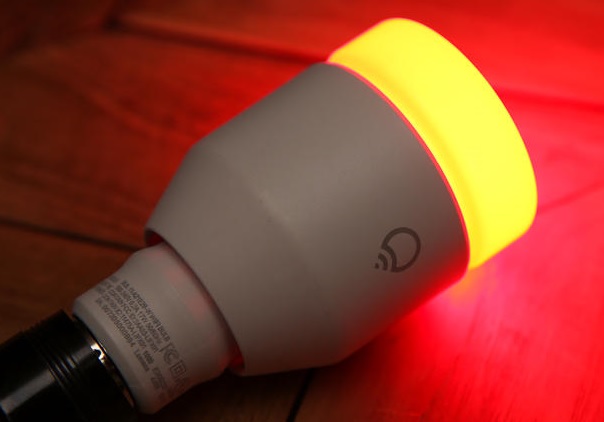Since Edison’s invention of the electric light 136 years ago, the light bulb has been associated with great ideas. However, some of the most interesting innovations in the light-bulb business today have little or no relationship to the specific task of lighting, and are associated much more with other areas, including safety, security, entertainment, the smart home and the Internet of Things (IoT).
Over the past six years, many suppliers of LED lamps and luminaires have offered “smart bulbs,” i.e. value-added, connected products that have enhanced features. The initial wave of smart bulbs sported features that involved illumination. One example is Philips’ Hue, which enables consumers to turn bulbs on or off, or even to change a light’s color, using a smartphone or tablet connected via a Wi-Fi hub.
The opportunity for connected smart bulbs is expanding rapidly, with worldwide shipments expected to surge to more than 11 million units in 2018, up from less than 1 million in 2013, according to market research firm IHS Inc.
Many LED lighting companies are becoming more creative and ambitious in their choice of additional features as they vie to cash in on this growth—and as they strive to maintain pricing and profit margins amid increasing competitive and pricing pressure from low-cost manufacturers in China. Let’s look at five of the most interesting features that are used in or planned for smart bulbs that expand beyond traditional lighting.
1) Smoke and carbon detectors
Safety experts recommend and some laws require that homeowners install smoke and/or carbon detectors on every level of their houses and also outside each bedroom. However, real-world compliance often falls short of guidelines and rules. The average American home has more than 40 light-bulb sockets, according to the U.S. Department of Energy. A new generation of LED lighting products could turn any number of these outlets into smoke detectors, simply by screwing in a bulb. IHS notes that lighting manufacturers have begun producing smart light bulbs that have integrated smoke detectors. An alternative approach is for a smart bulb to begin flashing if a smoke detector is triggered in a home. For example, LIFX Labs offers Wi-Fi-enabled smart bulbs that can connect to smoke detectors via the Nest home automation system.

2) Security and surveillance cameras
The ubiquity of light sockets also makes smart bulbs excellent platforms for integration with security and surveillance cameras in homes and businesses. Furthermore, in the guise of ordinary light bulbs, image-sensor-equipped lights can conduct surveillance in a more stealthy fashion than dedicated security cameras. Sengled Optoelectronics Co. Ltd. announced the Snap LED light bulb, which includes an integrated camera, among other security features. Named as a 2015 CES Innovation Award Honoree, the Snap’s camera supports 720p resolution and Internet protocol (IP). It also sports facial recognition capabilities.

3) Speakers
Smart bulbs also offer the prospect of delivering audio entertainment throughout a home or business without custom wiring. MiPow Ltd.’s Playbulb, for example, integrates a Bluetooth speaker that can be controlled by mobile devices. The Playbulb line includes lights that can pulse and change color based on the rhythm and tone of the music being played.

4) Control via mobile devices
A common thread running through all the smart-bulb examples presented in this article is the capability to access and control them via mobile devices. Smart-bulb suppliers frequently are offering their own apps for linking to smart bulbs. And as was noted above, MiPow allows users to stream any song in their iTunes collections to Playbulb speakers in every room in a house via Bluetooth. Because of this, the value and appeal of smart bulbs is moving away from their hardware capabilities and toward their software interfaces. Easy-to-use, powerful and evolving apps will be a major allure for consumers when selecting which smart-bulb solution to adopt.
5) Networking
This brings us to the final attribute: networking capabilities. Some new bulbs are including Wi-Fi boosters, eliminating dead zones and extending the range of wireless networks. This places them in a central role in the Internet. Because of this, the smart bulb eventually could rise to represent a major segment of the IoT. The number of light sockets worldwide amounts to 16 billion, according to some estimates. IHS estimates the number of devices connected to the entire IoT amounted to 11 billion in 2013 and will expand to 83 billion in 2025.Imagine 16 billion smart bulbs connected to the IoT, each equipped with capabilities including smoke detection, security cameras, speakers and a host of other unimagined capabilities enabled by semiconductor and sensor technology.
This may be the brightest idea yet for the light bulb.
By Jonathan Cassell, Special to Electronic Products
Advertisement
Learn more about Electronic Products Magazine





